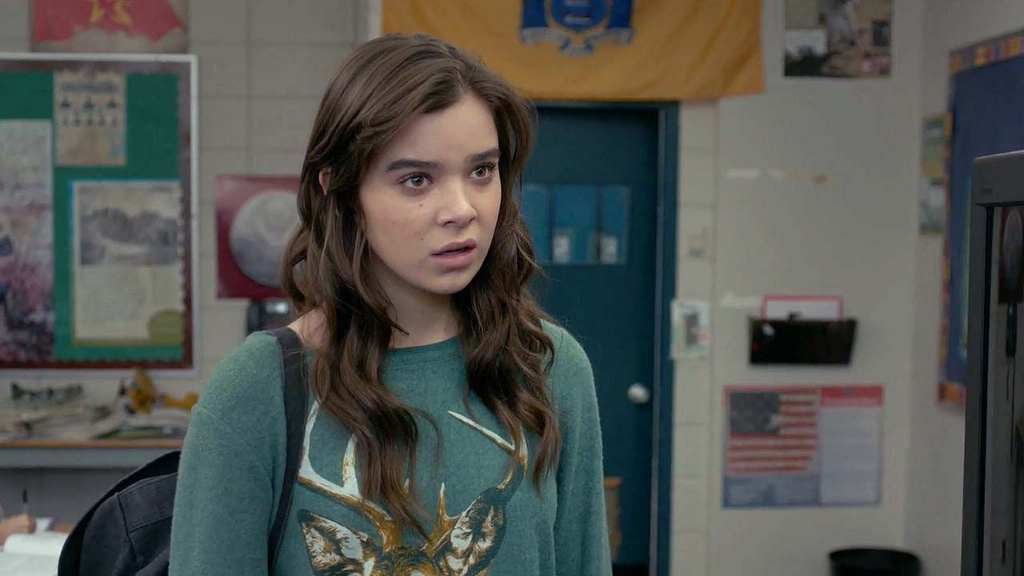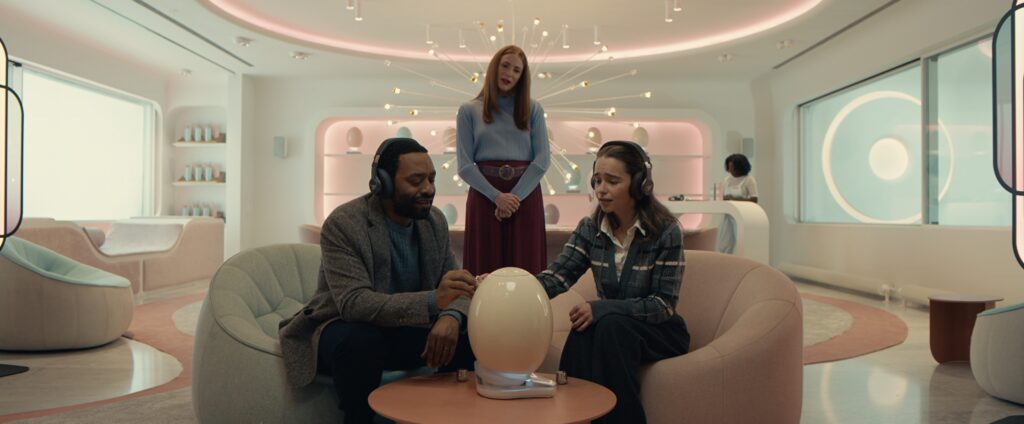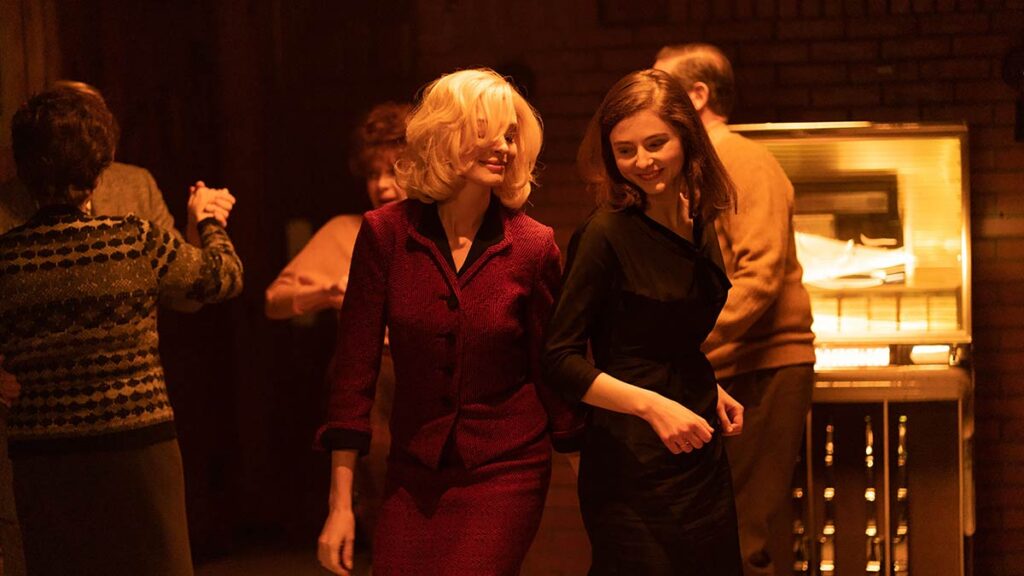The feeling of being overlooked, misunderstood, or ignored is common amongst adolescents. As such, there’s some inherent irony in a new study from Dr. Stacy L. Smith of the Media, Diversity & Social Change (MDSC) Initiative. The report found that young female characters — young non-white females in particular — were largely marginalized in the top 900 films from the past decade.
Entitled “The Future Is Female?: Examining the Prevalence and Portrayal of Girls and Teens in Popular Movies,” Smith’s report considers the 37,912 speaking characters from the 900 highest-grossing films since 2007 (excluding 2011). It finds that, on the whole, young female characters are missing from popular movies. When they are present, they are usually white, straight, able-bodied, and conform to gender stereotypes.
Of all the 4,730 characters aged 6 to 20 in the films studied, 39.7 percent were female, “a ratio of 1.52 males to every one female character.” Seventy-seven percent of those female characters were white, 10.8 percent were black, 3.8 percent were Latina, 1.9 percent were mixed race, and less than one percent were American Indian/Alaskan Native, Native Hawaiian/Pacific Islander, or Middle Eastern.
From the top 200 films from 2015 to 2016, just four of the 947 speaking or named younger characters identified as LGBT: three male characters were gay and another male character was bisexual. “There were no female child or teen LGBT characters across 200 films from 2015–2016,” the report notes. In the same 200 films, only three percent of the characters had a disability — and none of them were female.
When they were included, young female characters were likely to be dressed in revealing attire and are twice as likely as young males to appear with some nudity. Less than one-third of young female characters were depicted in the classroom or completing schoolwork and just 8.1 percent demonstrated “discernible academic interests or goals.” Only 15.4 percent of the young female characters across the 900 films studied were described as smart.
“Girls and young women are a vital part of our global future, and this report makes it clear that popular films do not value their stories, or the ways they already contribute to building a better world,” concluded Ann Lovell, one of the study’s funders. “We can and must do more for them.”
Find “The Future Is Female’s” key findings below or read the full report here.
- Of 37,912 speaking characters in 900 films, 12.5% were age 6 to 20, which is 7.9% below the 20.4% of U.S. children age 5 to 19 in the population in 2010.
- A total of 4,730 elementary school and teen aged children appeared across 900 movies. Only 39.7% of these characters were female and 60.3% were male. The gender ratio is 1.52 male characters to every 1 female character on screen. Gender parity was achieved in 2016, with younger females clocking in at 48.2% of all speaking or named roles. The percentage of females in 2016 was greater than 2007 and 2015.
- Among those female characters that could be evaluated for race/ethnicity, 77% were White, 3.8% Hispanic/Latino, 10.8% Black, 6.1% Asian, 1.9% mixed race/ethnicity, and <1% American Indian/Alaskan Native, Native Hawaiian/Pacific Islander, or Middle Eastern.
- The percentage of White female characters has decreased from 2007 to 2016. The last year evaluated is also lower than 2015. The percentage of females from Other racial/ethnic groups has increased 5.6% from 2007 to 2016, but is slightly lower than the percentage found in 2015. We do not see an uptick in the percentage of Black, Asian, or Latino characters across the 9-yr sample.
- Focusing on female speaking or named characters age 6 to 20 across the top 200 films of 2015 and 2016, 178 movies or 89% did not depict one Black/African American, 185 or 92.5% did not portray one Asian/Asian American, and 189 or 94.5% of films did not include one Hispanic/Latina.
- Lead and co lead roles across the 200 most popular films of 2015 and 2016 were examined. Eight young female leads or co leads appeared in 2016, which is not different than 2015 (7) or 2007 (6). In 2015 and 2016, 14 of the leading charac- ters were White (though one actor portraying a White character was Mixed Race), while 1 was a Native Hawaiian/Pacific Islander. All of the leading characters in 2007 were White. Of the 15 films with a young female lead in 2015–16, 8 or 53.3% were in the horror/thriller genre.
- Only 4 out of 947 speaking or named child or teenaged characters were LGBT. Of these, 3 were gay males and 1 was a bisexual male. Three of these characters were Black and 1 was White. There were no female child or teen LGBT characters across 200 films from 2015–2016.
- Of the 944 characters assessed in the 200 most popular films of 2015 and 2016, 28 or 3% were depicted with a disability which is below the 5.2% of children age 5 to 17 with disabilities estimated by the U.S. Census. Across these 200 popular films, 193 were missing any speaking or named young female characters with a disability.
- Female teens were almost four times as likely as male teens to be depicted wearing tight or alluring attire (39.5% vs. 10.2%). Teenaged females also were over twice as likely to be shown with some nudity (35% vs. 14.1%). Finally, teenaged females (60.7%) were more likely to be thin than teenaged males (38.4%).
- The percentage of females in sexually revealing attire has not changed from 2007 to 2016. However, the percentage of female teens shown with some nudity has increased from 23.3% to 35.4% of characters. Yet, 2016 is lower than 2015 as well as 2012, which is the sample wide high. Female teens were more likely to be depicted as thin in 2016 than they were in 2007. The 9-yr high was observed in 2009 and 2010, where more than 80% of female teens were portrayed thin or extremely thin on screen.
- Over half of the primary and secondary teen female characters analyzed (53.7%) were played by actors who did not match the age bracket of the character. All but one of these mismatches occurred when adult actors (age 21 and over) were cast to play teen roles.
- In terms of academic pursuits, slightly less than one-third (31.7%) of young primary and secondary female characters were shown in a classroom setting or doing homework. Even fewer girls and teens demonstrated academic interests. Only 8.1% of females had discernible academic interests or goals (i.e., to go to college, study astronomy, learn Chinese). 15.4% of younger females were referenced as intelligent within the course of the films studied.
- A mere 12.2% of female characters mentioned or were shown taking part in science, technology, engineering, or math activities. This ranged from being part of a chemistry class to building a time machine or jetpacks, or even hacking. Four of the characters in STEM were elementary-age girls, while 11 were teens. Eleven of the female characters with STEM activity were White, one of the teens was Hispanic/Latino, and three females (two teen, one elementary) were from Other Racial/Ethnic backgrounds.
- Just 7.3% of the elementary or teenage female characters assessed remarked on professional aspirations. Only 5 characters gave explicit or implicit indication that they had a role model — 4 were White and 1 was Black. Role models consisted of females who were historical icons and those with notoriety in the real world or in fictional settings.
- One-third (35.8%) of girls and teens were shown doing chores during the course of the film. Virtually all (93.2%) of the characters engaged in stereotypically feminine chores, though two female characters were shown engaging in counter-stereotypical actions (i.e., repairing a roof, farming) and three were shown engaging in neutral chores.
- Turning to hobbies and activities of younger characters, nearly half of the female characters analyzed participated in at least one leisure time or school-sponsored activity (46.3%). Of the female characters who participated in leisure or school-sponsored activities, 29.8% were involved in athletics such as soccer, cheerleading, gymnastics, ice hockey, and volleyball. Around a quarter of younger females (24.6%) were part of organized clubs or groups such as sororities, bands, troops similar to the Girl Scouts, and even a protest group. Finally, 63.2% of girls and young women had other individual interests or activities such as music, art, sailing, reading, journaling, and filmmaking, or attended other school functions such as school dances or college fairs, to name a few.
- The romantic interests of teens were also explored. Over half (52.4%) of the female teens evaluated had a romantic interest. The remaining 47.6% did not have a romantic attachment. These interests did not necessarily have to be- come romantic relationships — 23.8% teenage females clearly had a boyfriend in the movies examined. There were no LGBT female characters in the films examined; as a result, all relationships were with male characters.
- Finally, 10.6% girls and young women were the victims of bullying activities. Another 9.8% were instigators or bullies, and 4.1% were bystanders or intervened when bullying occurred.







